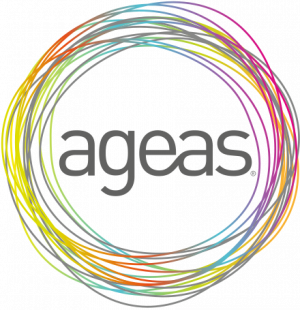Are chatbots the future of marketing?
That’s what many experts think... If chatbot technology has already revolutionized customer service, connecting companies with their customers in real-time to answer their questions and support sales, new AI-based features are boosting their productivity and sales even futher.
Adopting these features, marketers can unlock powerful ways to engage with their users, foster relationships and generate conversions—all from the same single platform.
In this article, we’ll explore how chatbot marketing can be used to improve user experience and reach higher conversion rates.
What is chatbot marketing?
Chatbot marketing is a marketing technique focusing on the use of chatbots, natural language processing (NLP) softwares, that help businesses build lasting relationships with customers while providing them personalized information or offers which can drive satisfaction, sales growth and loyalty.
Chatbots can be…
- Used as customer service software: chatbots help to automate recurring tasks such as frequently asked questions, share delivering delays or inform about opening hours.
- Used as a marketing automation tool: chatbots can suggest relevant products based on the customer transaction history or online behavior and even push dedicated offers.
- Used as an analytics solution: chatbots usually provide access to vast amounts of data that can help marketers understand their target audience better and optimize their marketing campaigns.
From the first basic versions used by businesses, chatbot technology evolved, including artificial intelligence that made these solutions increasingly popular, granting better accuracy in understanding customer queries, giving smarter and personalized answers and offering marketing and customer services improved features to use.
Benefits of chatbot marketing
Any marketing service should focus on promoting the company’s products or services, implementing strategies that help to identify and target customers, build brand awareness, generate leads, and at the end, increase sales.
Chatbot marketing is often neglected as an element of the channel mix …
That’s a mistake !
You can incorporate chatbots into your marketing strategy to:
Segment traffic:
Chatbots can be used to target specific audiences with personalized messages based on their preferences and interests. They're capable of understanding customer behavior patterns and using this data to create tailored content that will resonate better with these audiences.
Boosts engagement:
Chatbots can be used to boost lead generation by collecting leads from potential customers who interact with them. Through conversational AI technology, they can identify the needs of users and guide them through the sales process or provide more information about a product or service they may find interesting.
Communicate 24/7:
By providing 24/7 availability, chatbots help businesses increase conversions as potential customers no longer have to wait for someone to respond when they need help or clarification on something. Additionally, having an automated system available all hours of the day helps build trust amongst customers as it shows that businesses are always there to serve their needs even during non-business hours.
Provides data for analysis:
As mentioned above, chatbots can also be used as an analytics tool, collecting feedback from their customersfaster than before as responses from users take just seconds compared to days or weeks when relying solely on traditional methods such as surveys or interviews. Having this kind of data allows companies to continuously improve their offering by giving them insight into what their target market wants out of the experience.
Engage / Qualify Leads:
Whether they have a question about a product or service or not, marketing services should consider chatbot windows as gateways to connect with their prospect. It’s a blank space that may be used to push an offer - based on the web page they’re consulting - or any kind of call to actions (download a guide, join a webinar, read a case study…) using the chat interface to collect leads, directly or asking additional information to transform them into MQL or SQL, easily.
Chatbot Marketing Examples:
As technology evolves, chatbots are giving new opportunities to businesses, delivering customer experiences that didn't previously exist. Such experiences may include managing customer service inquiries, providing automated product information and updates, scheduling appointments, and more – streamlining the entire sale process from beginning to end.
Boost.ai, is among the best conversational AI chatbot providers on the market, and has already successfully delivered hundreds of chatbot marketing solutions, in different industries.
Let’s have a look on some chatbots examples:

Nordea Bank is a leading financial institution in the Nordic and Baltic regions with headquarters in Helsinki, Finland. The bank offers a range of financial products and services to individuals, corporations, and institutions, including banking, asset management, and investment banking services. The bank started using conversational AI to scale their customer service. SEE CASE STUDY
PLAY Airlines is an Icelandic low-cost airlines headquartered in the country's capital of Reykjavik. It deserves 24 different destinations in EU and USA. The company used Conversational AI to elevate its customer service. SEE CASE STUDY
Ageas Insurance is a leading insurance company headquartered in Brussels, Belgium, with a strong presence in Europe and Asia. The company provides a range of insurance products and services to individuals and businesses, including car, home, travel, and life insurance. Ageas is committed to sustainability and has set targets to reduce its carbon footprint and increase its investments in green assets. They resolved more than three-quarters of chat FAQs first-time with conversational AI... SEE CASE STUDY
Not interested in these examples we have a variety of chatbot case studies for you to check out!
Chatbot Integration - 7 steps to follow:
Integrating a chatbot can be done in several ways depending on the platform you want to work with, but here is a general step-by-step guide:
1. Determine your chatbot's purpose:
Decide on what you want your chatbot to achieve. Do you want it to help with customer support, lead generation, or any other purpose?
2. Choose a chatbot platform:
There are thousands of different solution providers online.
You need to find the one that fits your needs and preferences.
3. Design your chatbot:
Design the conversation flow of your chatbot. Create a list of questions and answers that your chatbot will be able to respond to. Learn more about it with our conversational design guide.
4. Integrate the chatbot with your website or application:
Once your chatbot is designed, you can integrate it with your website or application. Most chatbot platforms provide SDKs and APIs that can be used to integrate the chatbot. If you don’t have a full dedicated team of developers or a ten-month lead time, opt for a no code AI platform to integrate your chatbot easily.
5. Test your chatbot:
It is essential to test your chatbot before deploying it to your customers.
Test it thoroughly to ensure that it is working correctly and that it provides accurate responses.
6. Deploy your chatbot:
After testing, deploy your chatbot to your website or application. Ensure that the chatbot is easily accessible to users.
7. Monitor and improve your chatbot:
Chatbot analytics is good way to understand who your online users are and if your chatbot integration is a success or not. Monitor your chatbot's performance and user feedback. Make necessary changes and improvements to enhance the chatbot's functionality and user experience.



